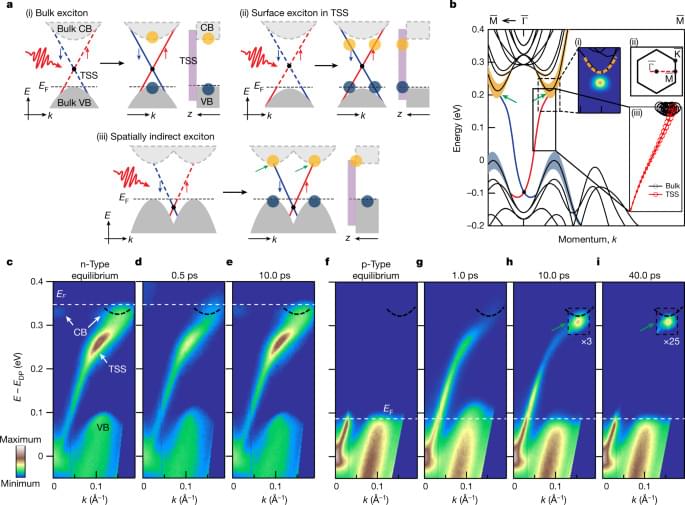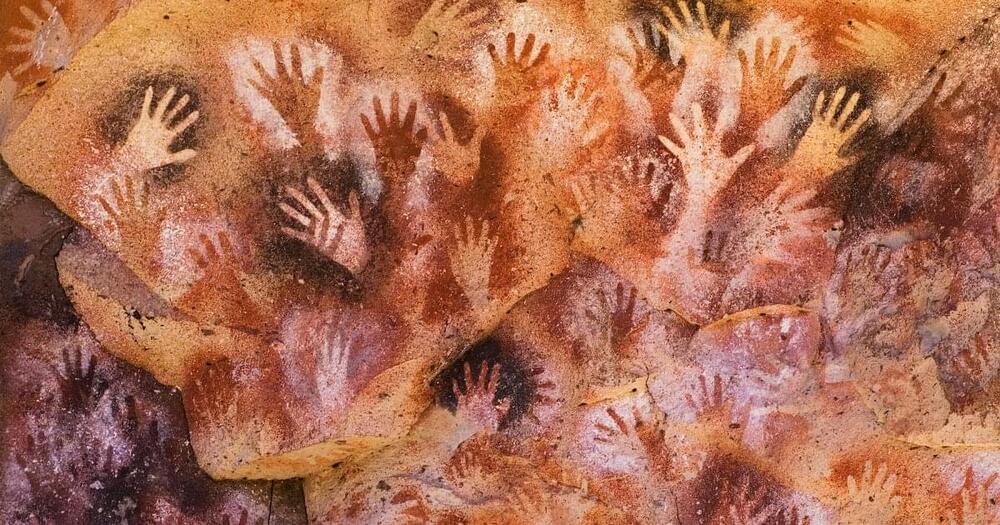https://www.youtube.com/channel/UCHY4AAMWhCTtx_z19kABacQ
Share your videos with friends, family, and the world.
https://www.youtube.com/channel/UCHY4AAMWhCTtx_z19kABacQ
Share your videos with friends, family, and the world.
How does the mind interact with the body? Six philosophers take a swing at answering the mind-body problem.

As the USGS-operated Landsat 9 Earth observation satellite passed above Greenland on Monday, March 13, 2023, its photosensors trained on the frozen landscape below it detected something unusual: a mysterious series of tracks scoring the icy surface of a remote fjord.
It was a curious sight on Earth’s largest island, whose most defining features are barren tundra and monumental glaciers that cover most of its surface. The imposing natural conditions in Greenland, in other words, leave little room for signs of activity visible from space.
Yet something must have caused the unusual tracks scoring the Tunulliarfik Fjord that appeared in the imagery collected by Landsat 9 in March. What had been their source? Could their underlying cause have been natural, and if so, then what conditions might be responsible?
Dr. Rupert Sheldrake believes that memory is inherent to nature, and has spent the last forty years of his career investigating slippery, esoteric phenomena at the very edges of empiricism. Some of the results are intriguing — dogs that know when their owners have started the long journey home, crosswords that become easier to solve a few days after they’ve been published in the papers, IQ scores increase generation after generation. His work is ongoing, the territory marginal, and the implications immense.
Support the scientific revolution by joining our Patreon: https://bit.ly/3lcAasB
Support us both when you pick up one of Rupert’s books: https://amzn.to/3xdrRmo.
Let us know what you think in the comments or on our Discord: https://discord.gg/MJzKT8CQub.
00:00:00 Go!
00:02:43 New Science.
00:07:59 Physics as supreme authority.
00:13:08 Experimentation.
00:22:51 Psychology.
00:25:37 Morphic Resonance.
00:37:32 Fragility.
00:41:52 Debate.
00:48:19 Science, State, and Truth.
00:52:50 Instrumentalization.
00:59:00 Analog Systems.
01:16:53 Avoiding Bitterness.
01:21:22 Engaging Critics.
01:28:16 God.
#consciousness #evolution #psychology.
Check our short-films channel, @DemystifySci: https://www.youtube.com/c/DemystifyingScience.



A few days after OpenAI announced a set of privacy controls for its generative AI chatbot, ChatGPT, the service has been made available again to users in Italy — resolving (for now) an early regulatory suspension in one of the European Union’s 27 Member States, even as a local probe of its compliance with the region’s data protection rules continues.
At the time of writing, web users browsing to ChatGPT from an Italian IP address are no longer greeted by a notification instructing them the service is “disabled for users in Italy”. Instead they are met by a note saying OpenAI is “pleased to resume offering ChatGPT in Italy”.
The pop-up goes on to stipulate that users must confirm they are 18+ or 13+ with consent from a parent or guardian to use the service — by clicking on a button stating “I meet OpenAI’s age requirements”.

Amazon is building a more “generalized and capable” large language model (LLM) to power Alexa, said Amazon CEO Andy Jassy during the company’s first-quarter earnings call yesterday. An LLM, like ChatGPT, is a deep learning algorithm that can recognize, summarize and generate text and other content based on knowledge from enormous amounts of text data.
Jassy said that although Amazon has had an LLM powering Alexa, the tech giant is working on one that is more capable than the current one. The Amazon executive believes that the addition of an improved LLM will help Amazon work toward its goal of building “the world’s best personal assistant,” but acknowledged that it will be difficult to do so across many domains.
“I think when people often ask us about Alexa, what we often share is that if we were just building a smart speaker, it would be a much smaller investment,” said Jassy during the call. “But we have a vision, which we have conviction about that we want to build the world’s best personal assistant. And to do that, it’s difficult. It’s across a lot of domains and it’s a very broad surface area. However, if you think about the advent of Large Language Models and generative AI, it makes the underlying models that much more effective such that I think it really accelerates the possibility of building that world’s best personal assistant.”
Duolingo is a leading educational technology company specializing in app-based learning. It’s also a pioneer in the field of educational artificial intelligence (AI) and recently partnered with OpenAI in order to become one of the first to offer GPT-4, its latest language model, to its customers.
OpenAI’s GPT technology has recently become familiar to millions, thanks to its ChatGPT app, which is said to have built the fastest-growing user base of all time.
Duolingo introduces GPT-4 on its language learning platform with AI used for personalized learning, automated feedback, and English testing. GPT-4 powered features provide a personalized and immersive experience.

Spotify CEO Daniel Ek discussed opportunities and concerns surrounding the integration of AI into the music platform, during its Q1 2023 earnings call.
With AI technology advancing rapidly, music industry players and streaming services face complex questions about copyright, ownership, and the balance between innovation and artist protection.
This was Spotify’s first earnings call following the removal of “Heart on My Sleeve,” an AI-generated track mimicking Drake and The Weeknd that racked up millions of plays on the platform.